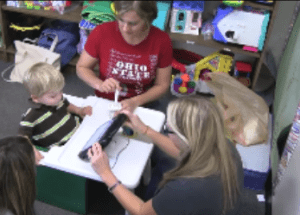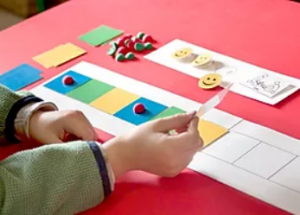Stimming in Autism – If your child has been diagnosed with autism, you may have noticed repetitive behaviors or sounds they perform. Everyone engages in self-stimulatory behaviors from time to time. For example, drumming your fingers on the table or desk when you’re bored, tapping your foot when you’re annoyed or impatient, or pinching the bridge of your nose when you feel exasperated are all examples of stimming neurotypical people engage in.
Why Do Autistic Children Stim?
While we’re still learning much about how the brain responds to stimming, experts believe it is a form of self-regulation for autistic people. Often, autistic people have sensory processing dysfunction, where they react differently to sounds, textures, and smells. They may become overwhelmed by sensations, be less responsive, and not notice sounds, smells, or other stimuli. Stimming often helps children with autism by,
- Blocking out excessive sensory input to help reduce overstimulation
- Provide stimulation when the person isn’t processing sensory input
- Regulate emotions that may feel too “big” to handle
- Distract from pain or physical or emotional discomfort

Stimming in Autism -Examples of Stimming in Autistic Children
Stimming can present in several different ways in children. They all have in common that they become repetitive and don’t seem to connect to an activity. Some examples include,
- Hand flapping
- Pacing
- Spinning or twirling
- Rocking
- Flicking fingers
- Humming
- Repeating words or phrases
- Repetitive manipulation of objects (opening and closing doors, flicking light switches, etc.)
- Finger snapping
- Covering and uncovering their ears
Typically, these activities are harmless, though they can distract people around them. However, some activities can lead to self-harm, including,
- Excessive rubbing or scratching
- Biting hands or excessive nail biting
- Head banging
- Ear clapping
- Slapping or hitting themselves
How Should You Respond to Stimming?
It’s essential to understand why your child is stimming and remember that the activity may benefit them. It’s not bad behavior, and your child is trying to cope with excessive or lack of stimulation.
Pay attention to what is happening around your child. Is noise, activity, smells, or physical sensations causing them to stim? Engage with your child to encourage them to switch from the stimming movement to something else and help them express why they feel a need to stim.
You can do things to help alleviate your child’s need to stim, including,
- Helping them learn to adapt to social situations with positive reinforcement
- Creating a “sensory diet” that schedules activities around their sensory needs
- Changing their environment to reduce sensory overload
- Introducing fidget tools to help them manage stress or providing them with things like earphones to help block out unwanted sounds
If your child has problems moving away from stimming activities or their activities include potentially harmful actions, you can talk to their doctor about medications that can help reduce stress. You must be patient with your child and recognize stimming as your child express.
Stimming in Autism – Does Your Child Need Special Instruction in Miami or Philadelphia?
Our experts are here to help your child reach their milestones. Contact us today if you’re ready to take the next step in your child’s development.








